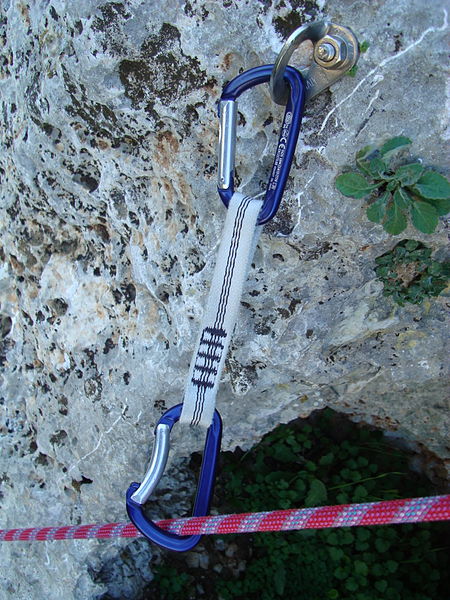A climbing route is a path by which a climber reaches the top of a mountain, or rock/ice-covered obstacle. The details of a climbing route are recorded in a climbing guidebook and/or in an online climbing route database, and will include elements such as the type of climbing route, the difficulty grade of the route–and beta on its crux(es)–and any risk or commitment grade, the length and number of pitches of the route, and the climbing equipment needed to complete the route.
North face of the Eiger: The original 1938 Heckmair Route (blue-line #2), contrasts with the 1966 Harlin Direttissima (pink-line #3), and the 1969 Japanese Direttissima (pink-line #6). Not shown is the 2006 Russian Direttissima which is an almost straight vertical line between the Harlin and Japanese routes.
In-situ sport climbing protection showing a rope clipped into a quickdraw, that is clipped into a permanently fixed climbing bolt.
Climbing is the activity of using one's hands, feet, or other parts of the body to ascend a steep topographical object that can range from the world's tallest mountains to small boulders. Climbing is done for locomotion, sporting recreation, for competition, and is also done in trades that rely on ascension, such as rescue and military operations. Climbing is done indoors and outdoors, on natural surfaces, and on artificial surfaces
Free solo climbing in the Verdon Gorge
Bouldering on Midnight Lightning in Yosemite
Traditional climbing on a crack in Indian Creek
Sport climbing on a bolted route in Spain






